What Bugs Eat Bonsai Trees?
Welcome to our discussion on identifying the bugs attracted to your bonsai tree as a source of food and water. Being aware of these bugs—and what they’re after—can save you some patience and sanity when it comes to caring for your bonsai babies.
Ants
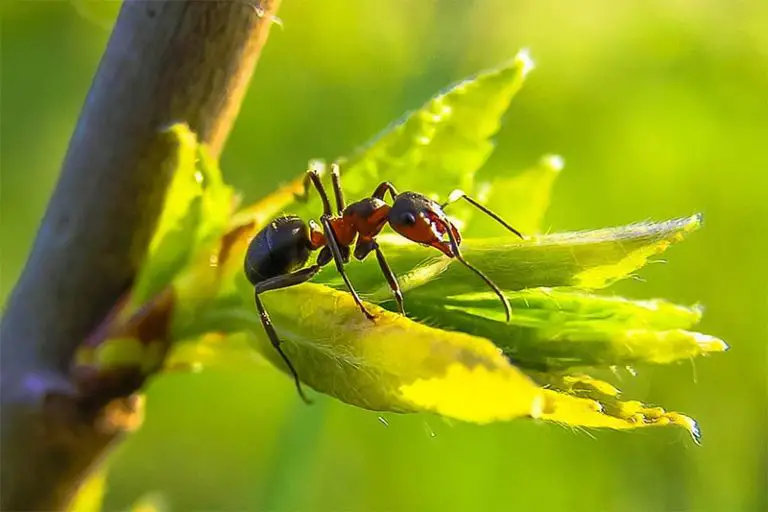
Ants on your bonsai are not that much of a problem but could be an indication of the presence of other pests such as aphids. What happens is that ants collect aphid eggs and transport them to a suitable spot where they eventually farm a sugary secretion known as “Honeydew.”
These ants might also establish a nest in your bonsai pots and, in so doing, will excavate a lot of your plant growing mediums. It is, therefore, advisable to keep any probable ant attractions away from your bonsai.
Aphids
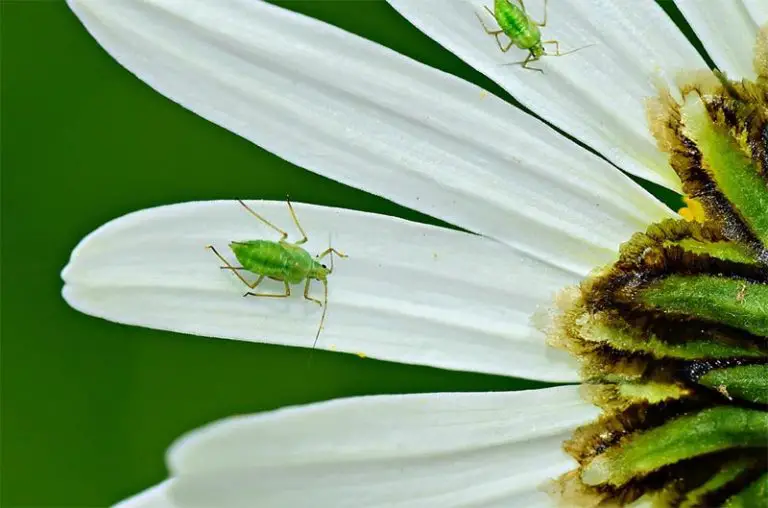
One of the most common bonsai tree pests, aphids not only extract plant sap from a plant but can also carry diseases. These bugs are generally green in color, but they also occur in gray or black.
You will usually find aphids on new stem growth or leaf bottoms. As these bugs are capable of causing much damage to your bonsai tree in virtually no time, it’s best to keep a lookout for them during your watering rounds.
Infestation by aphids will show signs such as weakened branches and leaves, curling, or other deformations. As mentioned earlier, the “honeydew” resulting from these pests is not only a big ant attraction, it also promotes a growth known as “black sooty mold.”
Borers
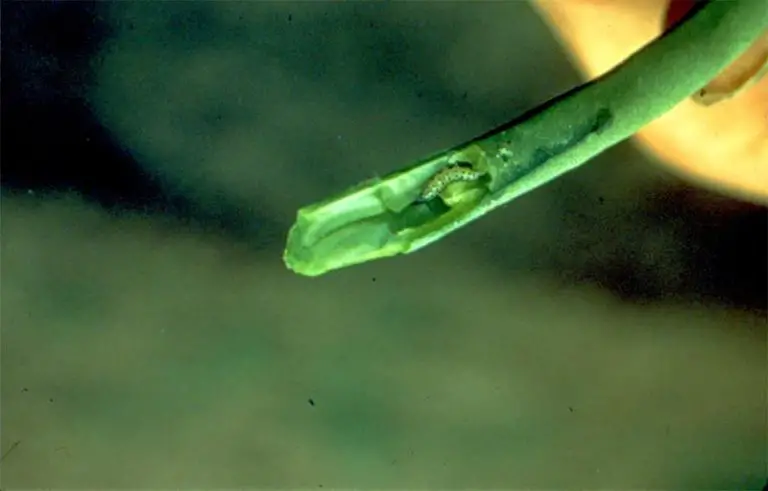
Tree borers result from different insects laying their eggs on or underneath the bark of a tree. On hatching, the larvae that emerge will eat or bore their way into an affected tree’s fibers or living tissue.
As these larvae chew their way through your tree, quickly maturing to adulthood, their typically ferocious appetites weaken the tree. Because the plant tissue they devour is vital for the normal functioning of the tree, if undiscovered, the damage caused can be catastrophic.
Signs that an adult insect has laid her eggs on your tree, and they have since hatched, will be tiny holes in the tree’s bark left by the growing larvae. These holes can vary in shape, and you might see evidence of these pests through sawdust at the base of the tree or nearby.
Caterpillars

Caterpillars, ordinarily, are the larval stage of moths or butterflies. They damage a plant or tree’s leaves above ground and can quickly strip it to the stem. Most fruit bonsai are particularly prone to seasonal caterpillars, which eat their leaves.
You must find and remove caterpillars as soon as you see any damage to prevent these pests from causing further harm to your bonsai. Signs of caterpillar damage are easily noticeable in the form of chewed leaves (think back to your silkworm days).
We have a detailed bonsai tree care guide with all the relevant information. Check the guide out here!

Mealybugs
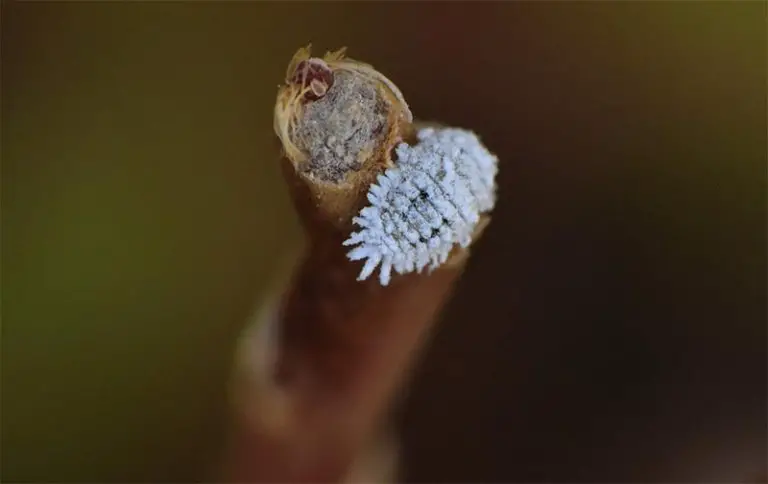
Easily identified as small white fluffy insects, the fluffy white ball that’s a mealybug is a waxy covering that these pests use to protect themselves. They typically occur in groups, except the Australian mealybug, customarily found as an individual. Bear in mind that the Australian bug, although alone, can still infest a single tree.
Mealybugs usually are found on the underside of branches or can occur in groups on the leaves of trees. There’s another species of mealybug that inhabits the root zone of your bonsai tree, so, while re-potting, it’s ideal to check the root system for these pests.
These bugs will diminish your tree’s growth while sucking its sap. Leaves can show signs of drooping and, if the infestation is bad enough, the leaves will turn yellow and die. The presence of mealybugs can also promote the growth of black sooty mold.
Red Spider Mites
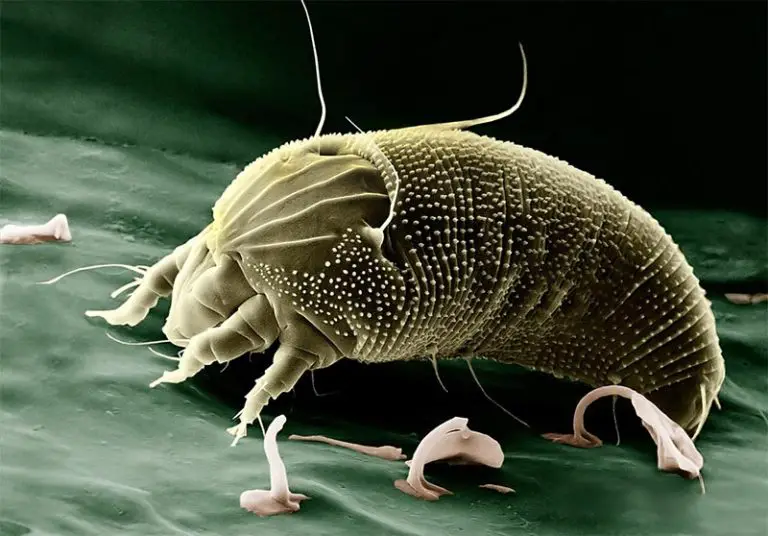
Red spider mites are one of the most common mite species that attack bonsai. They’re also one of the most dangerous pests that you are likely to encounter—once they have settled on a tree—they can swiftly kill it.
Evidence of their presence is by browning growth and leaves with brown or yellow markings. Red spider mites, which produce delicate webs, typically attack evergreens such as pines or junipers.
Because mites are usually so small that they’re not visible to the naked eye, should you suspect that a tree is infected, softly tap a branch over white cardboard or paper. If moving dots appear on the white object, you’ll know that you have a case of mites.
Scale
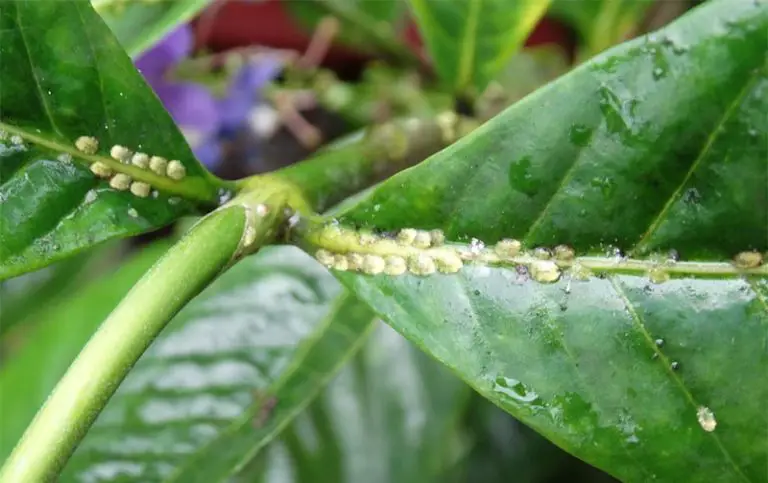
Scale pests occur in various colors, from transparent to white, black, yellow, or brown. When still young, they tend to move around a tree then eventually fix onto one part where they extract the sap.
These bugs often appear as bumps on the tree’s trunk, leaves, or branches. You will typically not find just one scale bug on a tree, as they tend to cluster together, but you can also find them spaced apart.
Branches of your tree will show signs of drooping and foliage that wilts, turning a yellow color when scale is present. The tree will typically also show signs of weakness, but it’s sometimes easy to miss them when they stick to the underside of growing material. As with aphids, ants and sooty mold are attracted to trees infected with scale.
Slugs and Snails
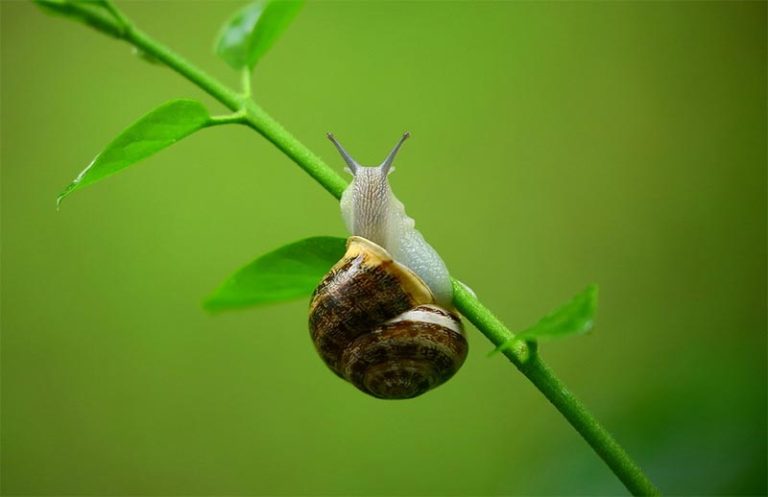
While these pests are most common in damp conditions, they can occur throughout the year. They are capable of stripping an entire bonsai in a single night, which is when they are most active.
Tip: The leaves of most bonsai are prone to attack from slugs and snails, so if you suspect that they are responsible for damage to your tree, check it using a torch at night. You can handpick them off the tree, or you can plant an empty canned food tin that’s half-filled with beer. As these alcoholic pests seem to find beer irresistible, they fall in and drown, allowing you to sleep with a clear conscience.
Thrips
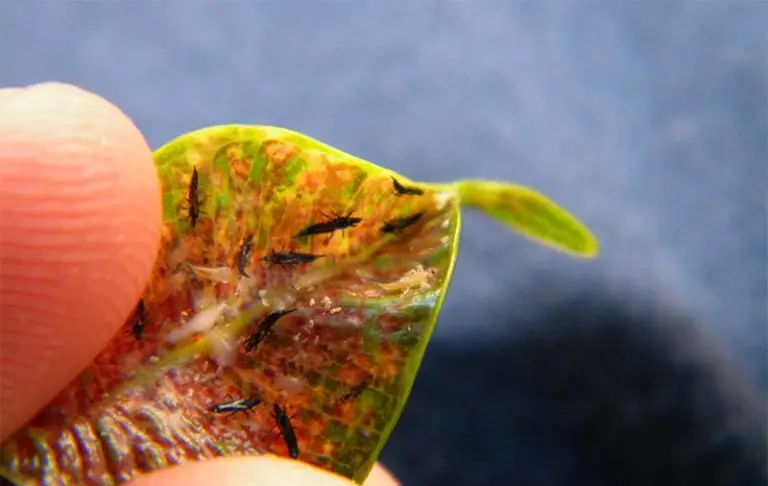
Image courtesy of 4.0 International
Because they are tiny, thrips are one of the more complex bugs to spot, but the damage they inflict is considerable. They feed in big groups and will jump into the air or fly if disturbed. Once they’ve damaged the surface of a leaf, they proceed to extract the sap.
Evidence that thrips have attacked and sucked a leaf dry can be seen by trails they leave behind or by brown or black spots—their droppings.
Whitefly
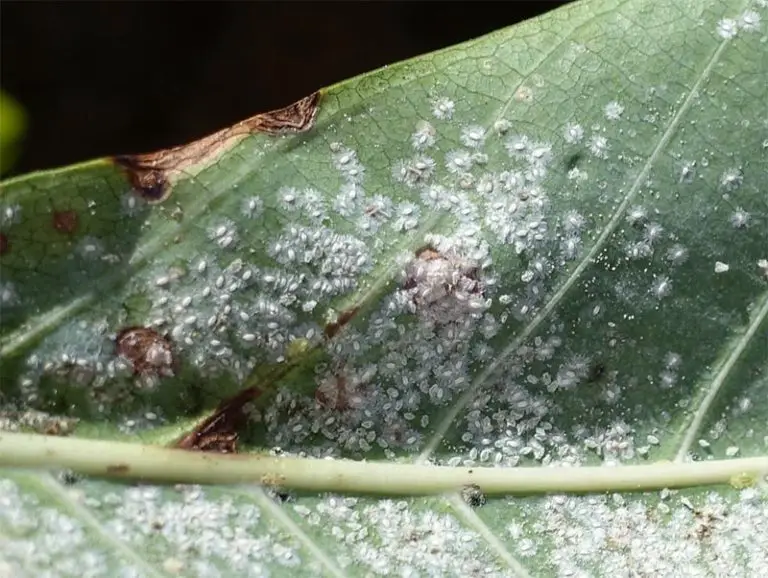
Another producer of “honeydew,” whitefly usually occur in large groups on the underside of leaves. If a leaf is disturbed, you will see numerous small whiteflies scatter. These pests extract sap from the leaves and secrete the sugary “honeydew” substance.
As already mentioned, the honeydew secretion can attract ants and fungal diseases such as sooty black mold. Affected trees have their growth restricted, with leaves turning yellow and drying out in bad infestations.
The best place to look for them is, once again, on the underside of leaves, where most of a plant’s sap is accessible. Adult whitefly may leave eggs they have laid behind when they depart.
White Grubs

White grubs are the larval stage of beetles, and they attack the root systems of bonsai trees. They don’t become evident until they have caused much damage to your tree. You will notice that the leaves of your tree start wilting—with no evidence of the other bugs already discussed.
Evidence of adult beetle attacks will be easier to spot as chewed leaves with notches in them. These chew marks will be sharper than those left by snails, slugs, and caterpillars and in a more u-shape than rounded.
Final Thoughts
So, there you have it. A way to identifying those nasty bugs attempting to turn your bonsai into a tasty meal. How to deal with them will be presented in another article.







